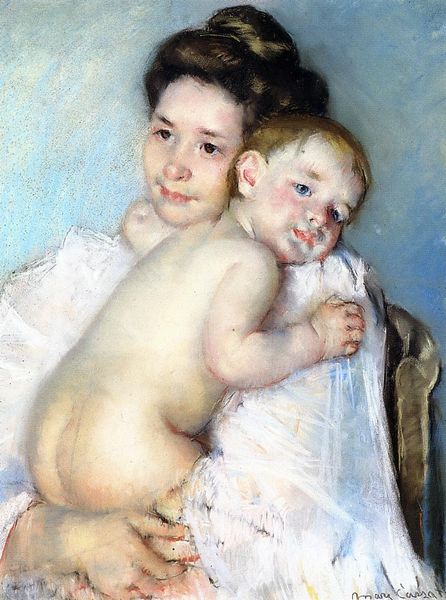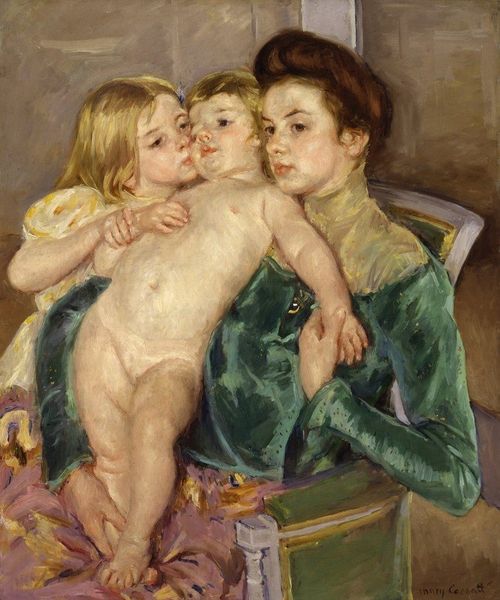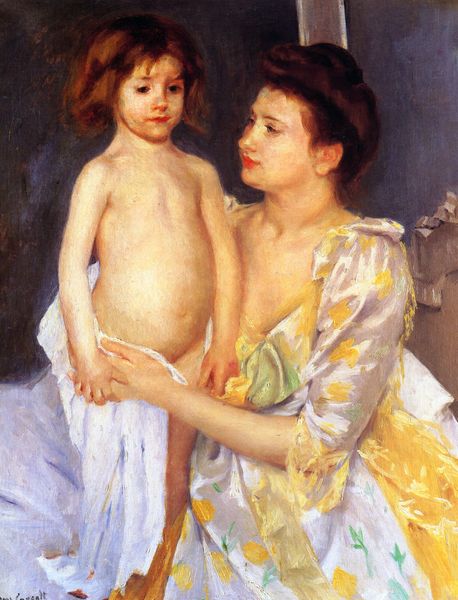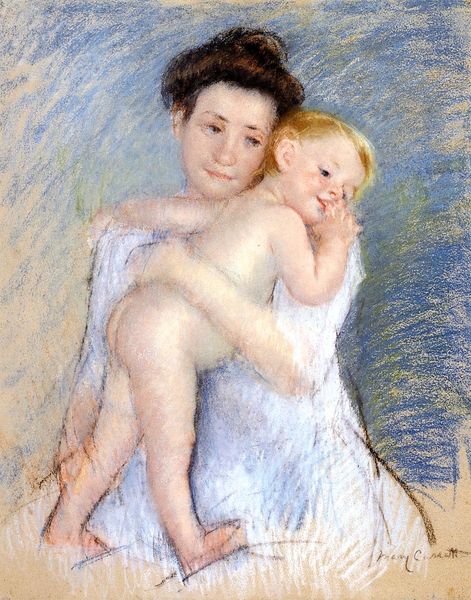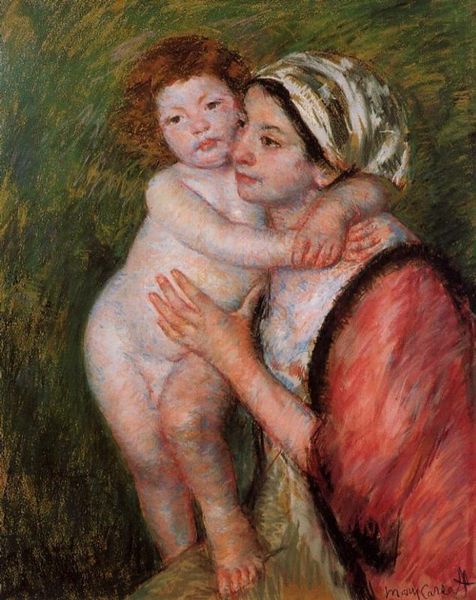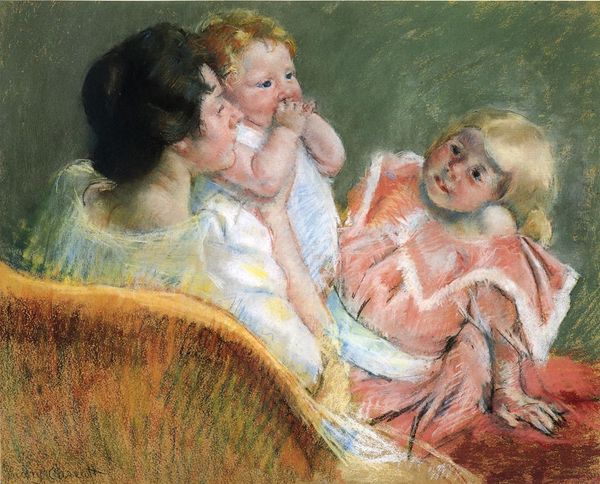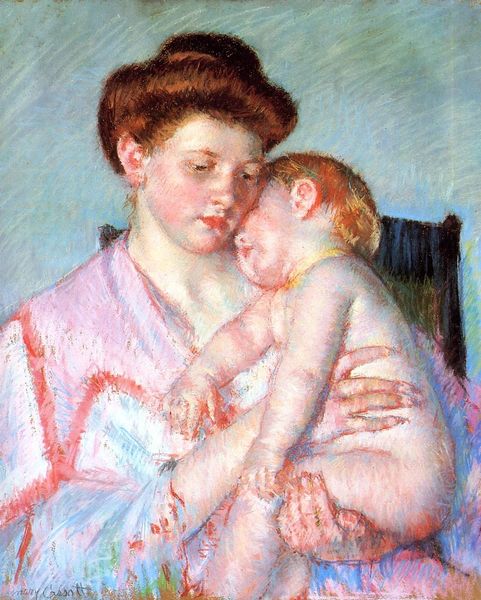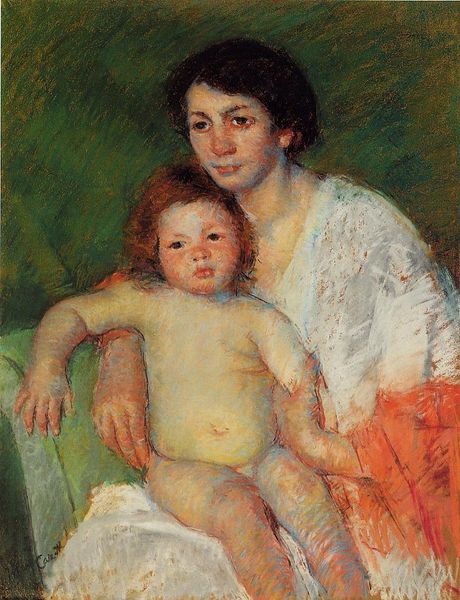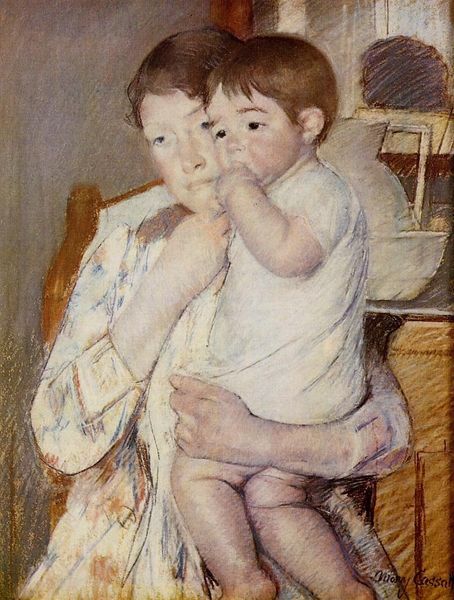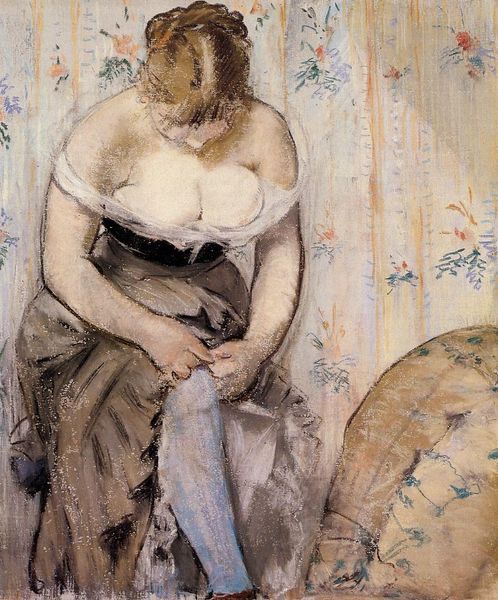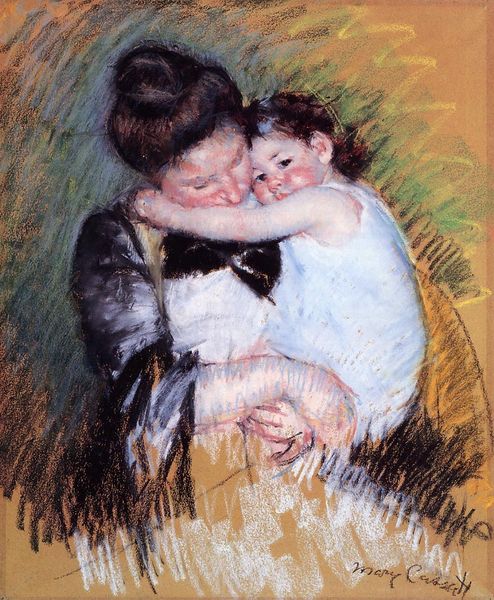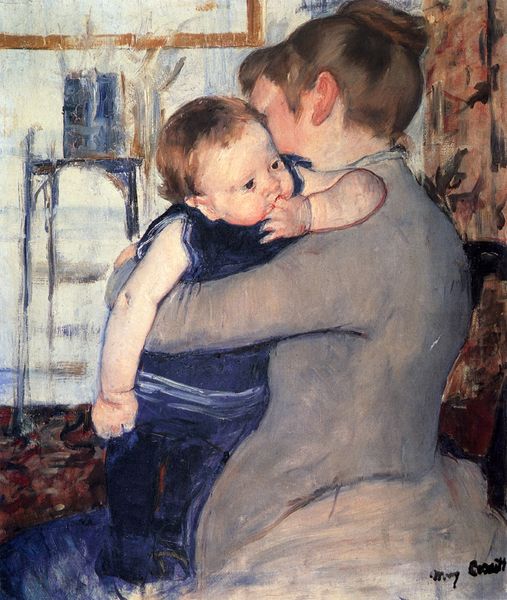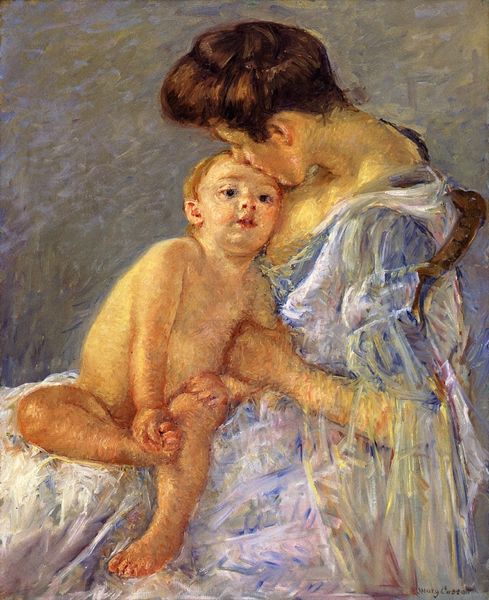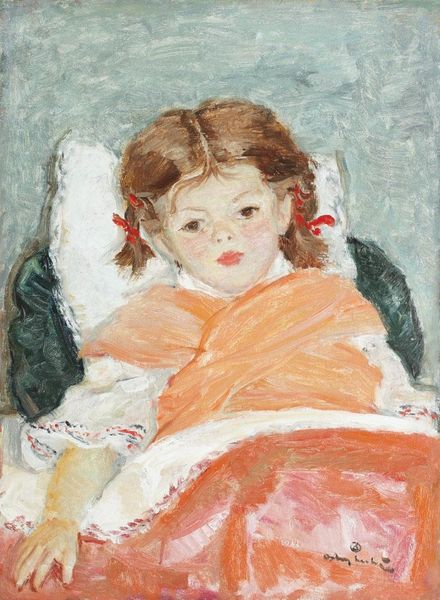
Dimensions: 57.15 x 67.94 cm
Copyright: Public domain
Editor: So, this is Mary Cassatt’s “Reine Lefebvre Holding a Nude Baby,” painted in 1903, with oil on canvas. I’m struck by the intimacy of it, the softness of the colours. What’s your perspective on this piece? Curator: The key here is Cassatt’s radical embrace of domestic labor and its representation. Let's consider the materials themselves: oil paint, canvas – commodities produced and circulated within a burgeoning capitalist system. Look at the visible brushstrokes, evidence of Cassatt’s own physical labor, applying those materials. The ‘intimacy’ you mention becomes labor, both on the canvas and in the scene it depicts. How do you see that intimacy connected to work, both of the painter and the mother? Editor: I guess I hadn’t considered the work involved just to produce this image! I was so focused on the subjects and what they might be feeling, I missed thinking about the labor in the brushstrokes and paint! It definitely shifts my reading to consider her output through labour... Curator: Exactly. Furthermore, it makes us question: How were the paints and canvas made and what social dynamics shaped the art market for Cassatt? The soft colours were often achieved with specific pigments dependent on complex supply chains that relied upon indentured labor to procure the base materials, thus complicating an easy reception of ‘intimacy.’ What does it mean to represent motherhood in a way that obscures those labour connections? Editor: Wow, I’d never considered the literal cost—the human cost—of the materials an artist uses. That throws a different light on how we view this, and really any, painting. Curator: It does, doesn’t it? It asks us to constantly question what's obscured, who profits, and who labours. The ‘gaze’ we give any artwork becomes active work, as well! Editor: Definitely food for thought. It pushes you to be really aware of the processes behind art, not just the finished product! Curator: Precisely. Now, you have the vocabulary and understanding to really investigate not only how artworks reflect cultural values, but the power relations inherent in material culture!
Comments
No comments
Be the first to comment and join the conversation on the ultimate creative platform.
